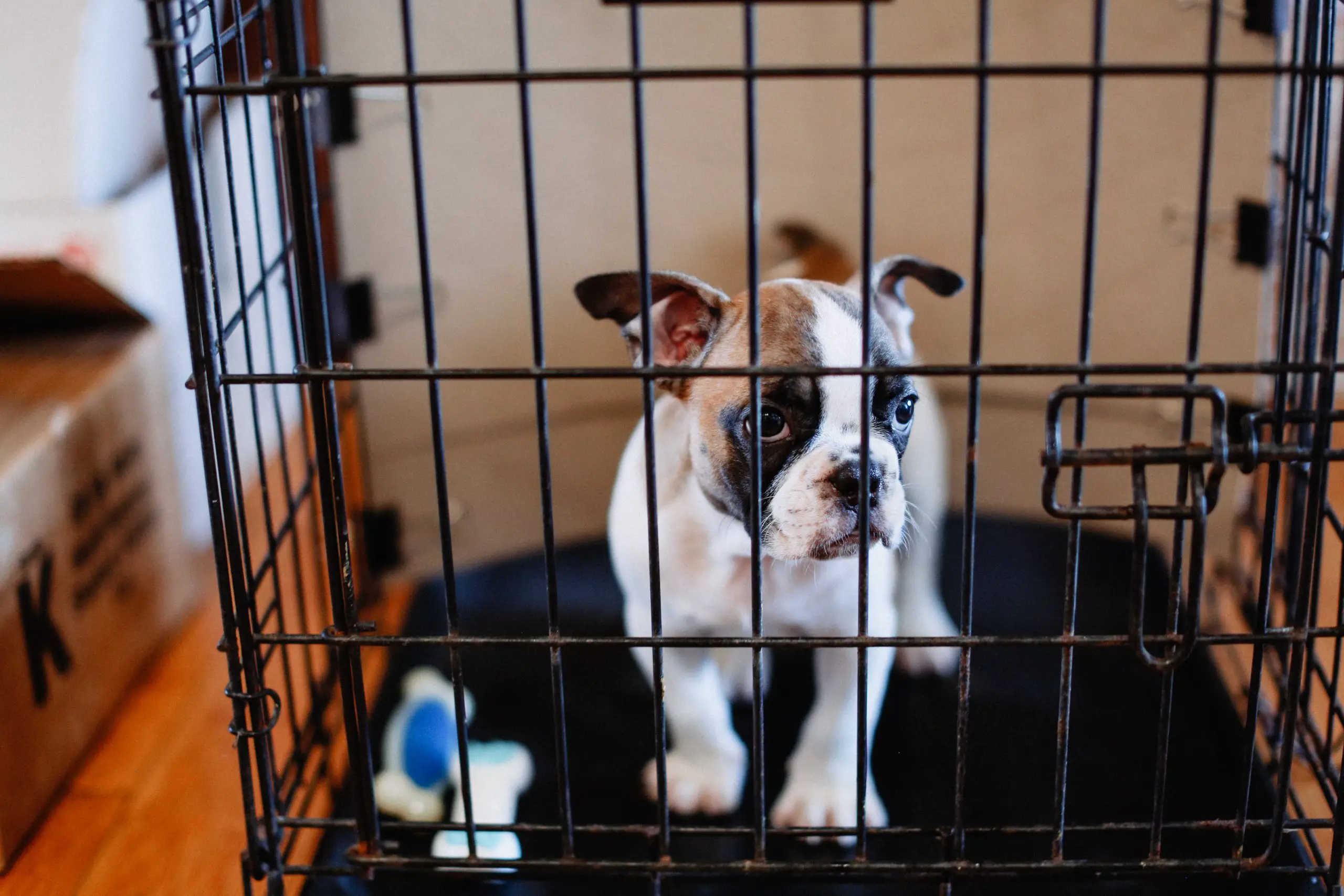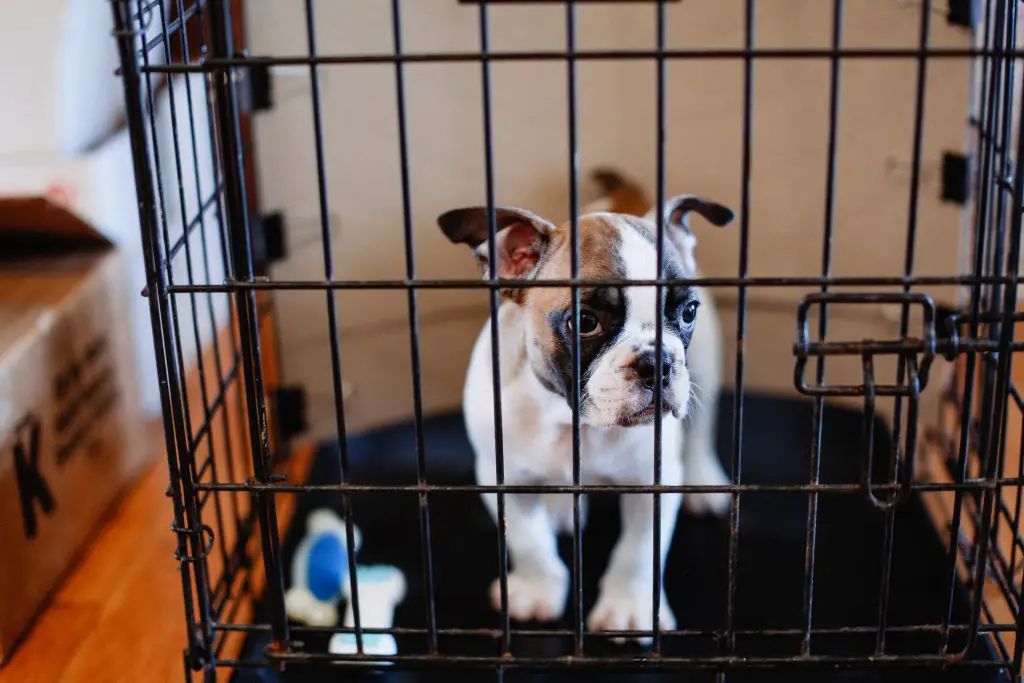Best Options For Crate Training Your Dog That You Should Follow
Despite what you may think, crating your dog isn’t cruel! Wild dogs, your dog’s ancestors, lived in dens, where they could sleep safely, raise a family, and hide when necessary. Even though your pooch doesn’t have to fend for himself in the wild any more (thankfully), he’ll still appreciate a safe place to rest. If you crate train your dog correctly, his crate will become his den.
We know it might seem hard at first, but with a little planning and patience, your dog can come to love his crate sooner than you think. As most dogs enjoy having a comfortable refuge where they can “get away” from things, you’ll actually be doing your dog a favor if you engage in proper crate training.
Crate training your dog has a great many benefits, including:
• Helping you housetrain your dog, so he won’t potty where he sleeps.
• Providing your dog a safe, quiet retreat to go to when he’s overwhelmed—or wants to sleep interrupted.
• Confining your dog when you aren’t home, depriving him of the opportunity to destroy the house.
• Training him not to sleep on the bed or on off-limits furniture.
• Giving him the safest place in the car—confined to a crate that is seat-belted in the back seat.
• Preparing him for emergencies, when he might have to be crated for long periods of time during an evacuation.
Teaching your dog to love his crate will not only help him learn the rules of the house but also make your life a lot easier.
Find the Right Crate
Don’t make the mistake of thinking your dog needs a huge crate. Dens should be small and cozy, just big enough for him to stand up and comfortably turn around in. Although some dogs will destroy blankets and crate pads, give your dog the benefit of the doubt and line the crate with soft bedding and toss in a blankie and his favorite kind of toy.
You can select from several different kinds of crates, each with a specialized purpose:
• Plastic crates are the sturdiest, but also the slowest to disassemble. Designed with solid sides, plastic crates usually have metal “windows” on either side so your dog can see out. The metal gate allows him to see out the front. Plastic crates are the best choices for travel, as they can easily be seat-belted and provide the most protection if you get into an accident.
• Metal crates are made with open latticed sides, so your dog can see out on all sides. This type of crate is not the best choice if your dog is reactive to other dogs while crated. Metal crates disassemble quickly, but they are also the most expensive kind of crate.
• Collapsible crates are made from sturdy fabric or plastic cloth. The framework collapses quickly for fast transport. A great choice for non-destructive dogs, collapsible crates are poor choices for dogs who like to chew fabric.
Crates can be expensive, especially if you have a large-breed puppy who will need larger crates as he grows. Look for crates at thrift stores, garage sales, and websites like Amazon.com or craigslist.com.
How to Crate Train Your Dog
Crate training is a process that can take days, weeks, or months, depending on your dog’s age, temperament, physical condition, and past experiences with crating. To make things flow smoothly, remember to be patient, go slow, and refrain from pushing your dog too hard. Make sure your dog associates his crate with pleasant things, like treats, meals, chew treats, and toys.
Step One: Introduce the Crate
Select an area of the house where your family spends a lot of time, like the living room or near the kitchen. Add blankets and toys, and leave the gate open so your dog can check it out. If you’re fortunate, your dog might take to the crate right away and need no further training.
Step Two: Throw Him a Crate Party
If your dog shows little interest in the crate, take him to it and give him the treat to get his attention. Then place a couple of treats inside the crate. When he goes inside, reward him with praise, belly rubs, and more treats.
Step Three: Serve His Meals in the Crate
When your dog is accustomed to going in and out of his crate on his own, start serving his meals in there. It won’t take him long to run inside when he hears you filling his bowl. If he won’t enter the crate, place his bowl just beyond the gate, and move it further inside until he’s eating comfortably in the crate. The next step is to close the gate while he’s eating. If this scares him at first, leave the gate slightly open until he’s comfortable.
Step Four: Accustom Him to More Time in the Crate
Begin leaving him in his crate for a few minutes after each meal, working up to 10 or 15 minutes. Once your dog is eating his meals regularly in his crate without seeming upset or anxious, teach him to stay in his crate for longer periods of time, even when you aren’t serving him a meal inside. If he whines, barks or acts out, you’re moving too quickly. Back up and reduce the time until he no longer displays unhappy behavior.
Start by tapping the crate and issuing a command, like “crate up.” He won’t know what that means at first, but he’ll learn over time, as long as you’re consistent. Once he’s inside, offer him a chew treat or a stuffed Kong. Close the gate while he’s eating it, and release him when he’s finished.
Over the next few days, increase the amount of time he’s in the crate to about a half-hour longer than it takes him to finish the treat. If your dog becomes anxious, sit by the crate, and make soothing sounds.
Step Five: Crate Him When You Leave
When your dog shows that he’s comfortable spending long periods of time in the crate, it’s time to teach him that you don’t have to be home for him to be happy in his crate. At first, crate him, leave the house, do a few quick errands, and return within the hour. Slowly lengthen the amount of time you’re gone.
Even if you intend for your dog to sleep in the bedroom, it’s a good idea to train him to sleep overnight in his crate. Follow the same process, beginning about an hour before you go to bed.
Don’t Misuse the Crate!
Don’t confine your dog to his crate for long periods of time. Although the crate is a good tool, spending too long in it can cause your dog to become restless, overweight, and bored. The amount of time your dog can remain crated will vary from dog to dog, but generally speaking, don’t crate him for more than eight hours at a time.
When you are housetraining puppies, don’t leave them in the crate for more than a few hours. Puppies under eight weeks old don’t have the capacity to “hold it” for long. If they begin to potty in their crate, it will be extremely difficult to housetrain them later on.
Don’t use the crate as a form of punishment, especially in the early stages of teaching. Your objective is to love his den, not fear it. If your dog misbehaves, confine him to the bathroom or another room.
If you’re trying to quiet down your dog, don’t hit the crate while he’s in it. Loud noises from unidentified sources tend to scare and confuse dogs. If you want to stop his misbehavior in a harmless way, shoot him in the face with water from a spray bottle. He’ll associate the “punishment” with the bottle, not the crate.


